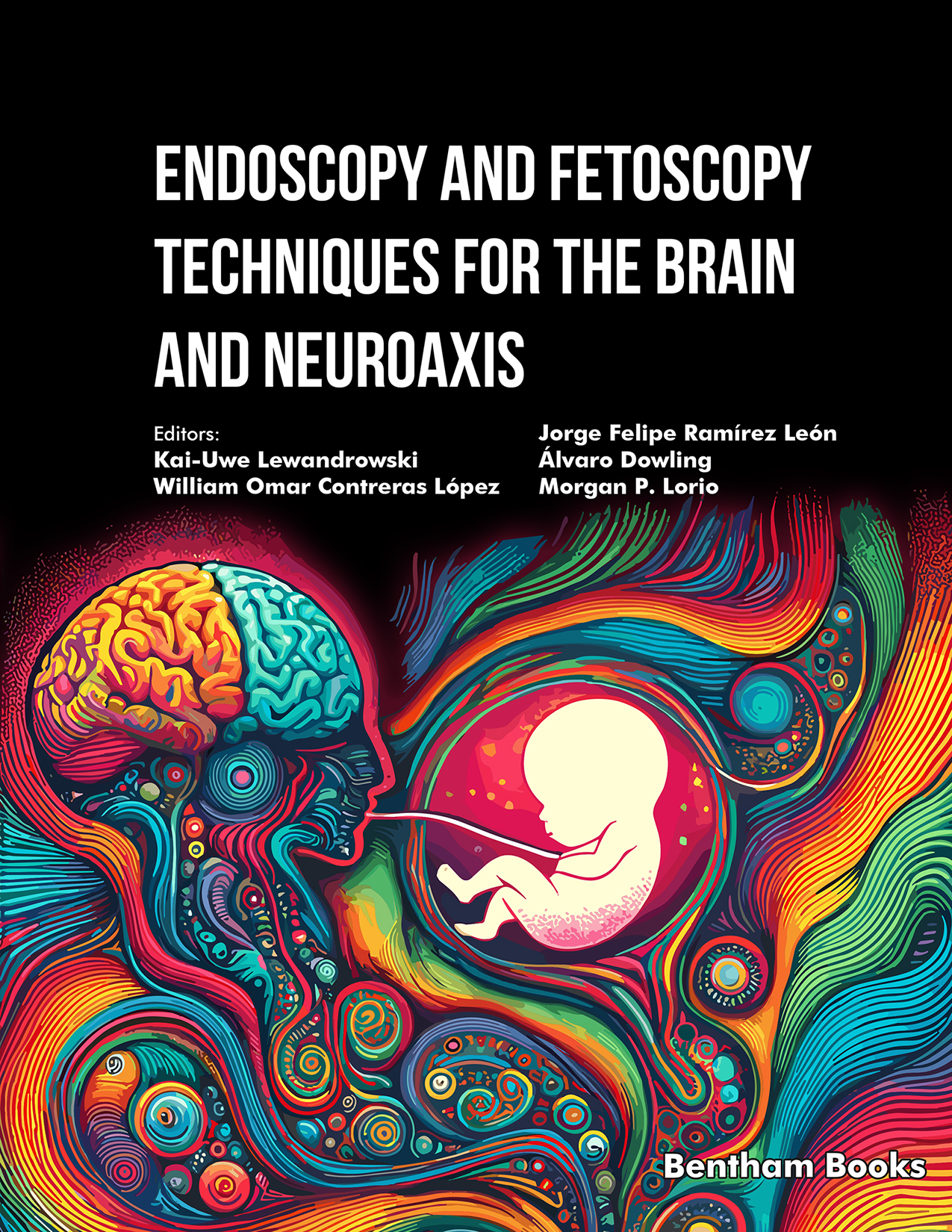Welcome to Neuroendoscopy and Interventional Pain Medicine, Vol. 2: Endoscopy and Fetoscopy Techniques for the Brain and Neuroaxis. This volume centers on sophisticated techniques and critical considerations in the rapidly developing field of advanced neuroendoscopy of the brain, anterior and posterior skull base, and spinal cord for pain, tumors, and seizures, mainly focusing on advanced intracranial, intradural, and fetoscopic procedures. It brings together the collective expertise of renowned specialists, offering an invaluable resource for clinicians and researchers dedicated to enhancing patient care through innovative surgical approaches.
The book begins with a comprehensive overview of the State-of-the-Art direct endoscopic visualization of the brain and neuroaxis, highlighting the latest advancements in imaging and visualization technologies that have revolutionized neurosurgical practices. One chapter sets the foundation for understanding the complex anatomy and pathological conditions that neuroendoscopy addresses. Trigeminal tractotomies and nucleotomies explore targeted endoscopic interventions for trigeminal neuralgia and other intractable facial pain syndromes. This chapter aims to improve outcomes for patients suffering from these debilitating conditions by providing detailed procedural insights. The endonasal endoscopic approaches to the sellar region and the anterior fossa chapter discuss minimally invasive techniques for accessing and treating pathologies in these critical regions. The authors present step-by-step methods and highlight the benefits of these approaches in reducing patient morbidity. Understanding the pathophysiology of myelomeningocele & modern surgical treatment is crucial for developing effective management strategies for this congenital condition. This chapter thoroughly examines the underlying mechanisms and contemporary fetoscopy options available to clinicians. Building on this knowledge, fetoscopy techniques for myelomeningocele outline the prenatal interventions that can be performed to mitigate the effects of myelomeningocele. The authors share cutting-edge fetoscopic techniques that hope for improved outcomes in affected fetuses. For the treatment of cancer pain, microendoscopic intradural cordotomy offers a minimally invasive option. This chapter details this approach's procedural aspects and efficacy, which targets the pain pathways within the spinal cord to provide relief for patients with intractable pain. The endoscopic anatomy of the transcallosal hemispherectomy based on a cadaver study with advanced 3D modeling provides a unique perspective on the anatomical intricacies of this procedure. Using advanced 3D modeling, the authors offer valuable insights into the endoscopic anatomy, facilitating better surgical planning and execution. Outcomes of endoscopic treatment for early correction of craniosynostosis in children present the benefits and results of early intervention for this congenital skull deformity. This chapter underscores timely surgical correction's importance in promoting normal brain development and growth. The chapter on autonomic dysreflexia with hypertension following durotomy-related intradural spread of irrigation fluid and air during routine spinal endoscopy addresses a severe but rare complication of spinal endoscopy. The authors discuss the pathophysiology, recognition, and management of autonomic dysreflexia to enhance patient safety. Finally, a commonly overlooked issue during thoracic spinal endoscopy is given credence in this volume's final chapter, highlighting the importance of preoperative identification of the Adamkiewicz System. A thorough preoperative workup is needed to avoid catastrophic complications during thoracic spinal endoscopy. By identifying Adamkiewicz's artery system, surgeons can better navigate the thoracic spine and reduce the risk of spinal cord ischemia.
Each chapter in this volume has been meticulously selected to reflect contemporary trends and innovations in neuroendoscopy of the brain, anterior and posterior fossa, brain stem, and relevant interventional pain management procedures. By addressing the need for safer, more efficient, and cost-effective solutions, this book aims to meet the demands of patients, healthcare providers, and policymakers. The editors hope that Vol. 2 of Neuroendoscopy and Interventional Pain Medicine: Intra- and Extradural Endoscopy & Fetoscopy Techniques of the Brain and Neuroaxis serves as an indispensable resource for clinicians and researchers committed to advancing the field and improving patient care.
Kai-Uwe Lewandrowski
Center for Advanced Spine Care of Southern Arizona and Surgical
Institute of Tucson
Tucson, AZ, USA
William Omar Contreras López
Clínica Foscal Internacional
Autopista Floridablanca - Girón, Km 7, Floridablanca
Santander, Colombia
Assistant Editors
Jorge Felipe Ramírez León
Fundación Universitaria Sanitas
Bogotá, D.C., Colombia
Álvaro Dowling
Orthopaedic Spine Surgeon, Director of Endoscopic Spine Clinic
Santiago, Chile
Hui-lin Yang
Professor & Chairman of Orthopedic Department
The First Affiliated Hospital of Soochow University
No. 899 Pinghai Road, Suzhou, China
Morgan P. Lorio
Advanced Orthopedics, 499 East Central Parkway
Altamonte Springs, FL 32701, USA
Xifeng Zhang
Department of Orthopedics, Wangjing Hospital
China Academy of Chinese Medical Sciences, Beijing, China
&
Anthony T. Yeung
Desert Institute for Spine Care
Phoenix, AZ, USA

